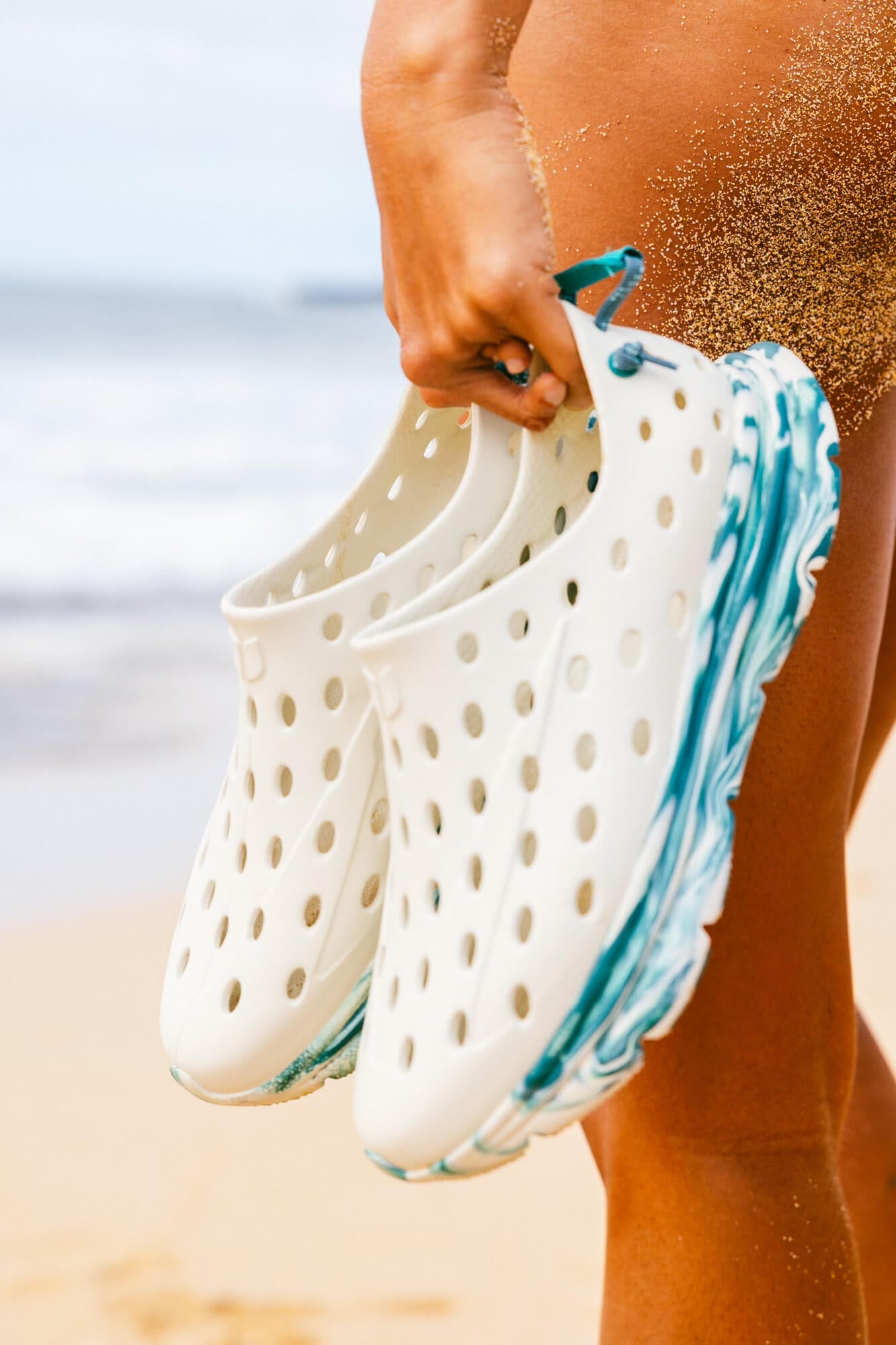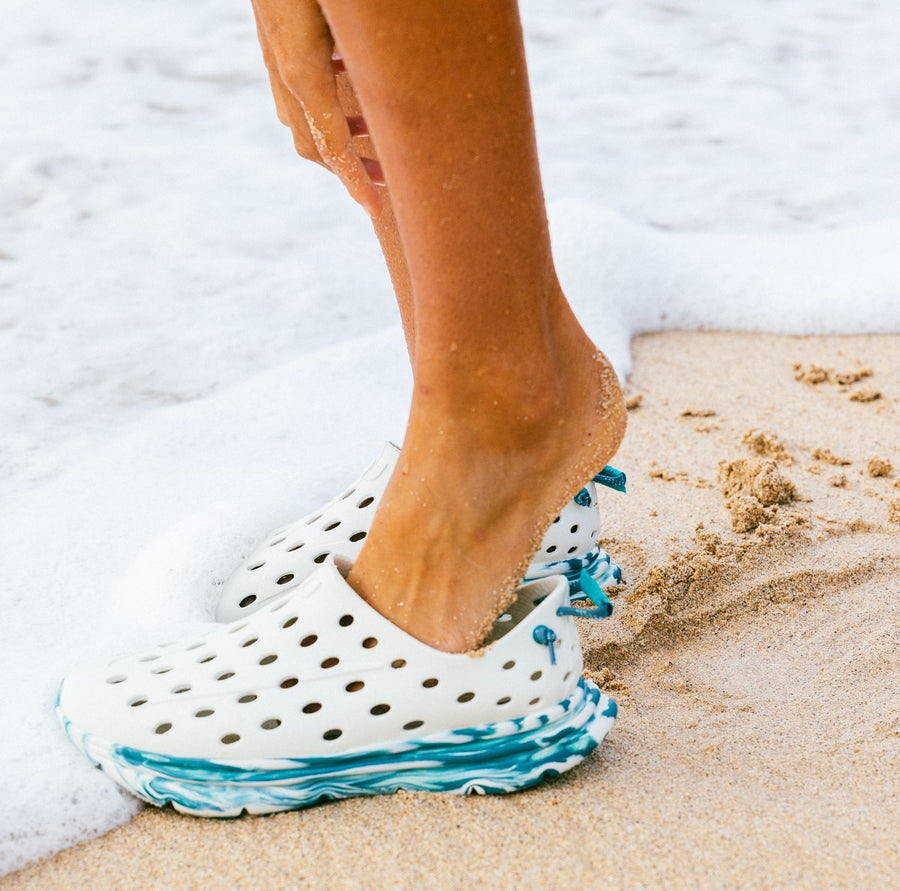BEST SHOES FOR HEEL PAIN
Dealing with heel pain can be a challenging experience, impacting our ability to move comfortably throughout the day. Whether battling plantar fasciitis, Achilles tendinitis, or other foot conditions, finding the right pair of shoes can go a long way in alleviating discomfort and promoting recovery.
From supportive athletic shoes to orthopedic footwear, we'll uncover the features and styles that offer extra cushioning, stability, and arch support so you can find your next go-to shoe.
What to look for in shoes for heel pain
If you have heel pain, comfortable shoes that support and cushion the heel and arch are key. Here are some of the best styles and supportive features to consider in your search for the right footwear:
Athletic shoes with cushioning
Wearing shoes designed for walking, running, or cross-training is often a great bet. A walking shoe or other athletic style usually features solid arch support and ample cushioning in the heel and midsole, which can help absorb shock and reduce pressure on the heel. The best walking shoes for heel pain have soft cushioning and shock absorption to reduce impact and strain.
Orthopedic shoes
Orthopedic shoes (and custom-made orthotics) alleviate various conditions, including heel pain. They typically offer features such as arch support, removable insoles, and a wide toe box for comfort during all-day wear.
Low-heeled shoes
Opt for shoes with a low heel or preferably no heel at all to reduce strain on the heels. Flat shoes or those with a slight heel can help distribute weight more evenly across the foot than an elevated heel, reducing pressure.
Supportive sandals
Sandals with built-in arch support and a contoured footbed are great shoes for heel pain. They provide excellent shock support compared to less structured styles and are extremely light, which suits those with high arches and flat feet. Avoid flat, unsupportive sandals that can exacerbate heel pain.
Slip-on shoes with cushioning
Slip-on shoes that are easy to put on and take off can minimize heel strain. Look for a slip-on design with cushioned soles and supportive features like a padded instep collar. They offer comfort and versatility, ranging from work shoes to dress shoes.
Custom orthotics
Custom orthotic inserts, which can be added to various types of shoes, may sometimes be necessary to provide personalized support, promote good foot health, and alleviate foot pain.
Roomy toe box
Ample room in the front portion of a shoe that surrounds and protects the toes is as important as the heel itself. Shoes with a roomy toe area allow the toes to spread naturally, improving alignment, balance, stability, and overall comfort.
Shoes designed for active recovery
A recovery shoe with ample cushioning and shock absorption (especially in the heel area), arch and heel support to help align the feet, and stability features like medial posts to prevent overpronation can help with heel pain.
While they can help alleviate foot discomfort—especially after running or other high-impact activities—for chronic or severe heel pain, you may need to look for other shoes with more specialized features and combine them with other therapies for the best results.
Discover Kane Recovery Shoes!
Kane Revive shoes offer excellent support, comfort, and durability for those in need of top-notch recuperative footwear. These kicks come with all the right features to assist you during your rehabilitation journey, featuring an adjustable hook-and-loop single-strap synthetic upper, plush TPR footbed, and durable injected EVA outsole.
Aside from providing quality products, they are also committed to sustainability, having made plans to become a B Corp while dedicating 1% of their overall profits towards environmental charities.
When and how to wear Kane Revive
The best time to wear a recovery shoe is directly after strenuous activities such as running or exercising. This helps minimize inflammation and launch the healing process. To guarantee maximum comfort and effective recuperation, make sure that you are wearing your recovery footwear correctly by tying up laces securely for a snug fit.
5 common causes of heel pain
Various factors can cause heel pain. Consulting a healthcare professional for a proper diagnosis is critical to determining the best treatment, especially if the pain is persistent. Five of the most common causes are:
1. Heel spurs
Heel spurs are bony growths or protrusions that develop on the underside of the heel bone (calcaneus). They are often caused by long-term strain, stress, and damage to the band of tissue connecting the heel bone to the toes.
2. Plantar fasciitis
Plantar fasciitis is an inflammation of the thick band of tissue that runs along the bottom of the foot and connects the heel bone to the toes. It affects millions worldwide and is typically caused by overuse, overloading, or overstretching. Plantar fasciitis symptoms include sharp pain in the heel or bottom of the foot.
3. Achilles tendinitis
This condition is an inflammation of the Achilles tendon, the large tendon that connects the calf muscles to the heel bone. It causes pain and swelling in the back of the lower leg (above the heel) and is associated with high-impact sports, tight calf muscles, foot arch problems, and improper footwear.
4. Excessive pronation
Overpronation is an abnormal gait where the foot rolls inward excessively when walking or running. When the arch of the foot collapses too much due to overpronation, it increases strain and stress on the thick band of tissue that runs along the bottom of the foot and connects the heel bone to the toes, leading to inflammation and pain in the heel. It can also contribute to other conditions that cause heel pain, such as Achilles tendinitis, heel bursitis, and heel spurs.
5. Heel bursitis
Inflammation of the bursa, a fluid-filled sac that cushions the heel bone, is often caused by repetitive irritation or pressure on the heel. It causes pain, swelling, and tenderness in the heel and back of the ankle area, making activities like walking, running, and jumping painful and difficult.
How to treat heel pain
One of the best ways to avoid heel pain in the first place is to wear shoes that fit well "and have shock-absorbent soles, rigid shanks, and supportive heel counters," according to the American Podiatric Medical Association. But if you do experience heel pain, here are some ways to treat it:
- Rest and elevate the heel: Avoid activities that aggravate the pain and allow the heel to rest. Elevate the foot to help reduce inflammation.
- Apply ice to the heel: Ice the heel for 10 to 15 minutes, two to three times per day, to decrease inflammation.
- Stretch the area: Do specific stretches to improve flexibility and blood flow to the area.
- Take over-the-counter pain medication: Use acetaminophen, ibuprofen, or naproxen to relieve pain and inflammation.
- Wear supportive, cushioned shoes: Look for good arch support and shock-absorbing features. Consider using shoe inserts or orthotics for additional support.
- Seek medical treatment if pain persists: See a podiatrist or doctor if home treatments don't provide relief within two weeks. They may recommend physical therapy, oral or injectable anti-inflammatory medication, or other treatments.
When to see a doctor for heel pain
If pain and inflammation (heat, redness, and swelling) persist, experts recommend contacting a healthcare provider. Some situations that warrant seeing a doctor, chiropodist, podiatrist, or other healthcare professional include:
- You have severe, persistent pain that does not improve with home treatment
- You have sustained an injury to the heel area, such as a sprain or fracture
- You experience numbness, tingling, or an inability to walk or move the foot normally
- The pain occurs at night or while resting rather than just during activity
- There are signs of infection, including fever, redness, and warmth in the heel area
- Despite trying self-care remedies, the pain persists beyond a few days
- You have any other unusual symptoms that are concerning
Frequently asked questions
What are the best shoes for heel pain?
Adequate cushioning, a wide toe box, arch support, and stability features like medial posts are key features to look for in shoes for heel pain. Shoes with these characteristics can help align the feet, distribute weight evenly, and reduce strain on the tendons and tissues that commonly cause heel pain.
What can I wear to help with heel pain?
To treat heel pain, consider wearing supportive footwear and accessories. A custom or over-the-counter orthotic insert, heel cup, and small oval cushion can provide added arch support and cushioning.
Night splints can stretch the plantar fascia and Achilles tendon while sleeping, reducing stiffness in the morning. Compression socks improve circulation and reduce swelling. Soft heel pads or cushions offer additional shock absorption.
Wear properly fitted shoes with good arch support and cushioned soles, avoiding high heels. Incorporating stretching exercises can also help reduce tension and improve flexibility.
Consult with a healthcare professional, such as a chiropodist, podiatrist, or orthopedic specialist, to determine the best course of action to manage your heel pain.
How can I stop the pain in the heel of my foot?
The key is addressing both the biomechanical factors (proper footwear, weight management) and activity-related factors (warming up, pacing) to prevent heel pain from developing in the first place.
Look for shoes with excellent arch support, cushioning, and a deep heel cup to properly support the heel and align the feet. Avoid high heels, flip-flops, and other unsupportive shoes that can exacerbate heel pain.
Stretch regularly to improve flexibility and reduce strain on the heel. Ice the heel to help reduce inflammation and relieve pain, and take over-the-counter pain medication if necessary. Anti-inflammatory drugs like ibuprofen can also help alleviate foot pain and swelling.
Use specialized orthotics or inserts for extra cushioning and support for the heels and arches. If you participate in high-impact activities, give your feet time to rest and recover to reduce further strain on the heels.
If home remedies don't work, see a healthcare professional. A foot specialist can properly diagnose the cause of heel pain and provide more advanced treatment options.
Addressing the root causes of heel pain, such as improper footwear, tight muscles, and inflammation, through a combination of self-care strategies can help stop and prevent further heel pain.
What shoes do podiatrists recommend for plantar fasciitis pain?
Podiatrists recommend shoes for plantar fasciitis that properly support and cushion the heel and arch areas. Trading your worn-out shoes for a pair with the proper support can relieve pressure and alleviate heel pain. Consider consulting a podiatrist or footwear specialist for personalized recommendations based on your specific needs.
What are some exercises to relieve heel pain?
Stretching and strengthening exercises can help relieve heel pain by targeting the muscles, tendons, and fascia in the foot and lower leg. Here are five exercises to try:
1. Calf stretch:
- Stand at arm's length from a wall, with one foot behind the other
- Gently bend the front knee while keeping the back knee straight and heel on the ground
- Hold the stretch for 15 to 30 seconds, then switch legs
- This stretch targets the gastrocnemius and soleus muscles in the calf
2. Foot rolling:
- Sit in a chair and roll the foot back and forth on a round object like a frozen water bottle, can, or foam roller
- Do this for about one minute per foot
3. Towel toe curls:
- Sit with a towel on the floor and use your toes to scrunch and pull the towel towards you
- Repeat 10 times, one to two times per day
4. Seated foot stretch:
- Sit and cross the affected foot over the opposite leg
- Pull the toes towards the shin
- Hold for 10 to 15 seconds; repeat two to three times
5. Plantar fascia stretch on a step:
- Stand with the ball of the affected foot on a step, heel hanging off
- Lower the heel towards the ground to stretch the plantar fascia
- Hold for 30 seconds; repeat four to six times per day





















